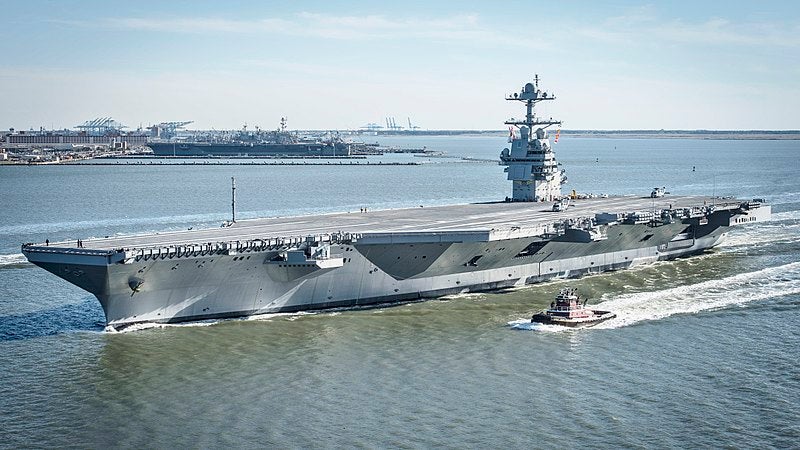
The US Navy’s aircraft carrier USS Gerald R Ford (CVN 78) has concluded its 11th independent steaming event (ISE 11).
The vessel is currently more than midway through its post-delivery test and trials (PDT&T) phase of operations.
During ISE 11, USS Ford achieved multiple PDT&T milestones intended to exercise installed systems and carry out crew training.
The vessel qualified 19 pilots assigned to the Gladiators of Strike Fighter Squadron (VFA) 106 and 21 pilots assigned to the Greyhawks of Airborne Command and Control Squadron (VAW) 120, bringing the total number of catapult launches and arrested landings to 3,975.
A test of the SLQ-32 electronic support system was conducted by USS Ford’s intelligence department to measure sensor accuracy while operating adjacent to the Shipboard Electronic Systems Evaluation Facility range (SESEF).
During its Cryptologic Simulator Exercise on the SESEF Range, the ship’s Signal Exploitation Space (SSES) concluded its initial testing.
SSES collected and analysed 100% of signals transmitted by Information Warfare Training Group within the HF/VHF spectrum. This is the first for a Ford-class vessel.
VAW-120 completed the first carrier qualifications using the aerial refuelling variant of the E-2D Advanced Hawkeye.
The variant allows for increased time on station to defend the carrier strike group (CSG) and supports long duration missions.
VAW-120 instructor Lieutenant Brian Ferdon said: “The E-2D has the same airframe as the E-2C, but represents a two-generation leap in radar detection technology
“With the upgraded communications suite, it means that we can move out of early airborne detection and into airborne command and control missions sets.”
Ford’s security department conducted 9mm service pistol and M4 service rifle live-fire exercise. The exercise qualified more than 40 sailors and used 4,022 rounds of small arms ammunition.
Other maiden events included the aircraft intermediate maintenance department’s complete run to afterburner of an F/A-18 jet engine using jet engine test instrumentation, the combat systems department’s pre-action aim calibration on three close-in weapons system mounts, and the completion of an Air Intercept Control (AIC) event.
The AIC missions demonstrated integration with CSG-12 to defend USS Ford and the remaining force.
More than 180 personnel were provided with 12 day-long advanced hands-on damage control training on the .50cal machine gun.
For a scheduled maintenance, the vessel returned to port for the completion of construction and activation of select shipboard systems.
Once the PDT&T phase of operations is completed, USS Ford is scheduled to undergo a full ship shock trials (FSST).



